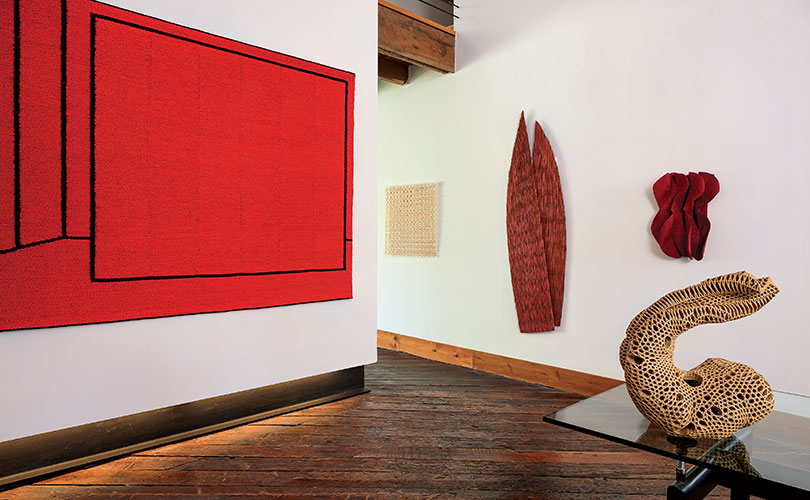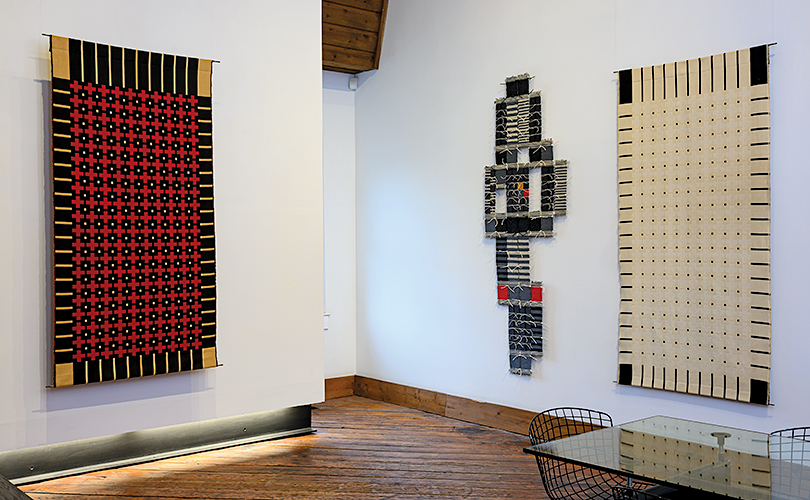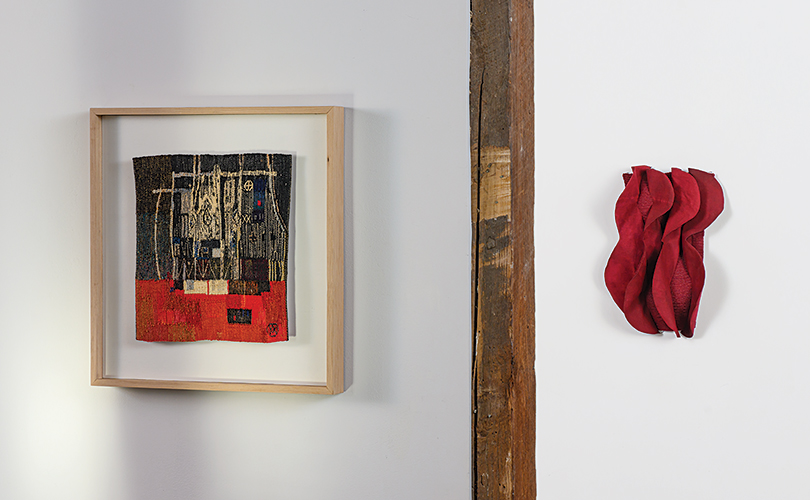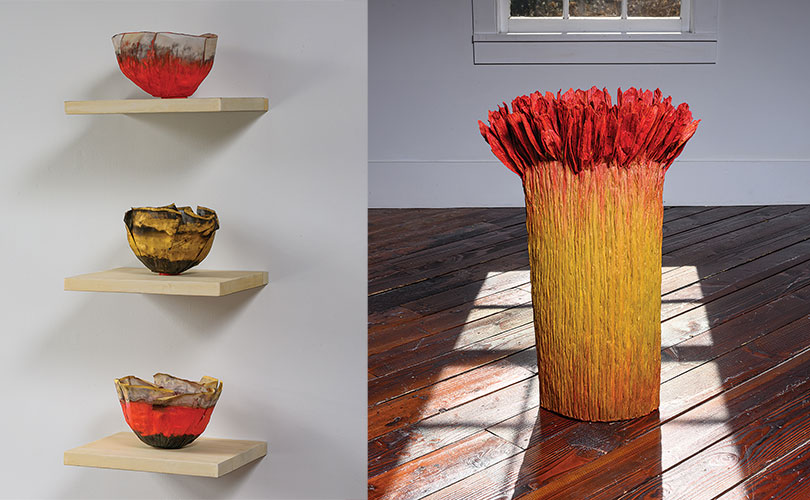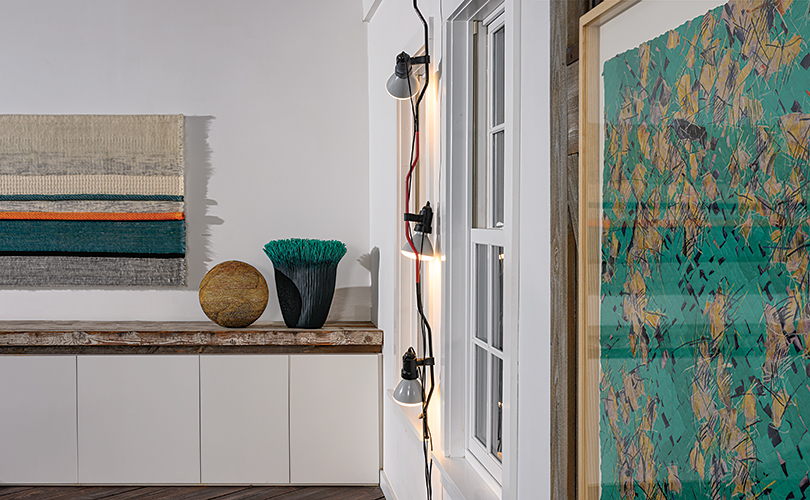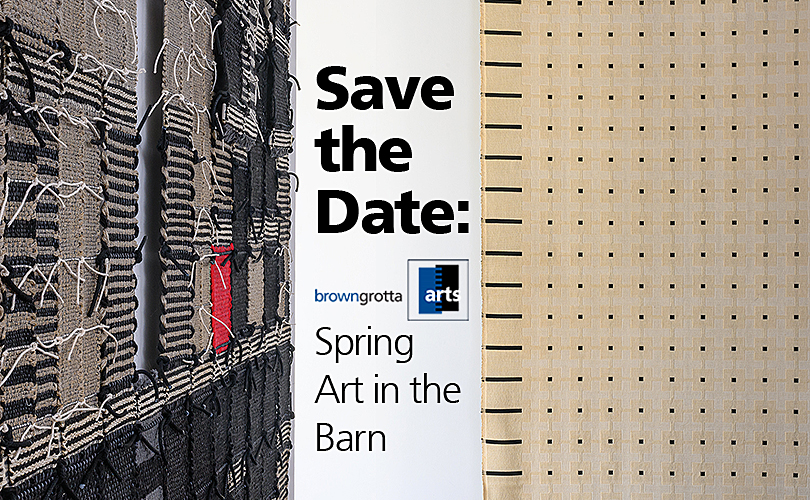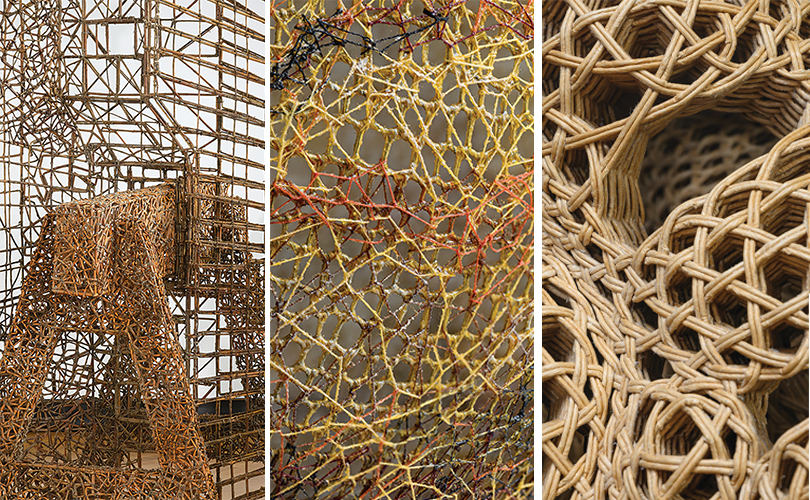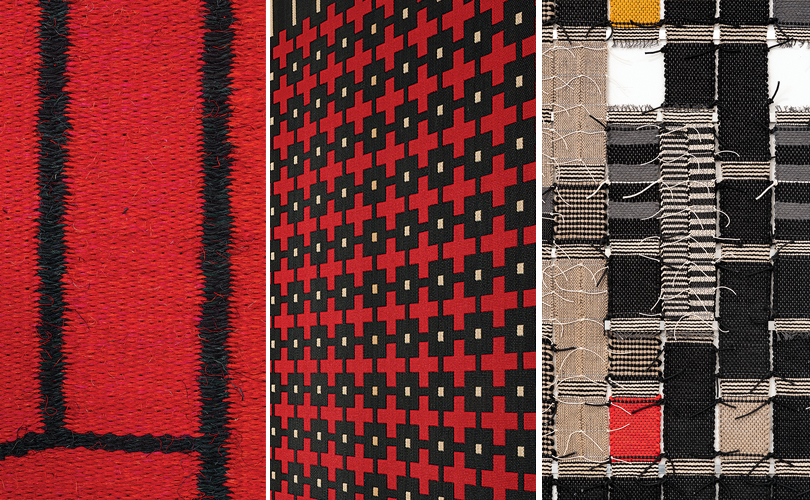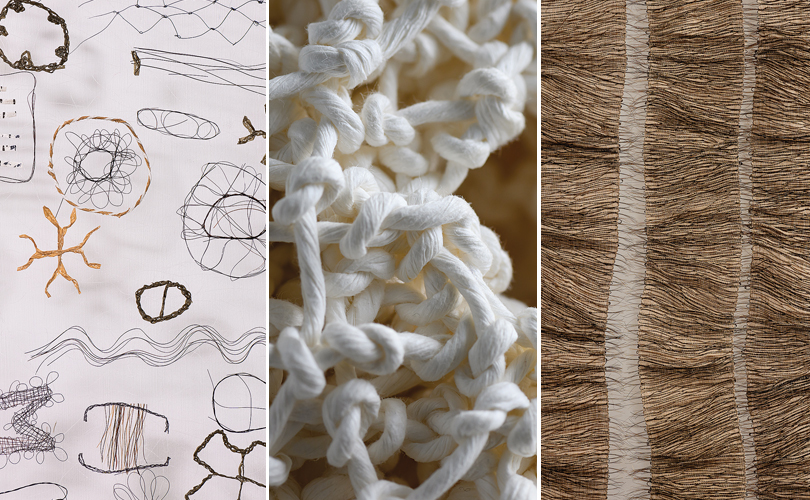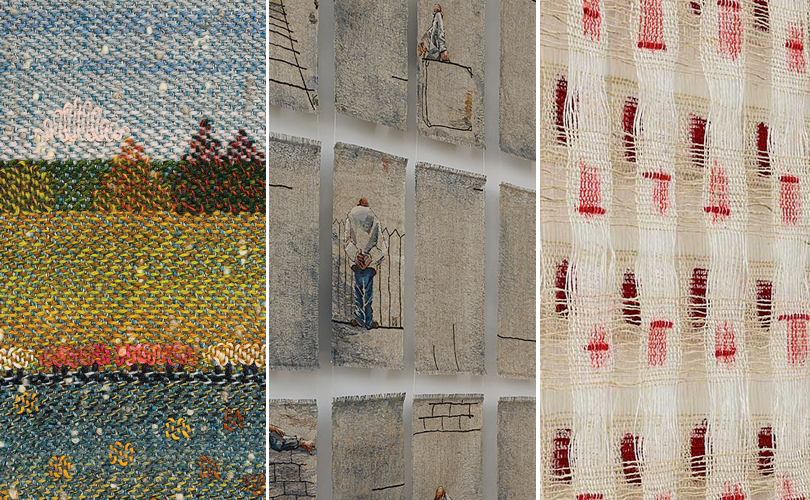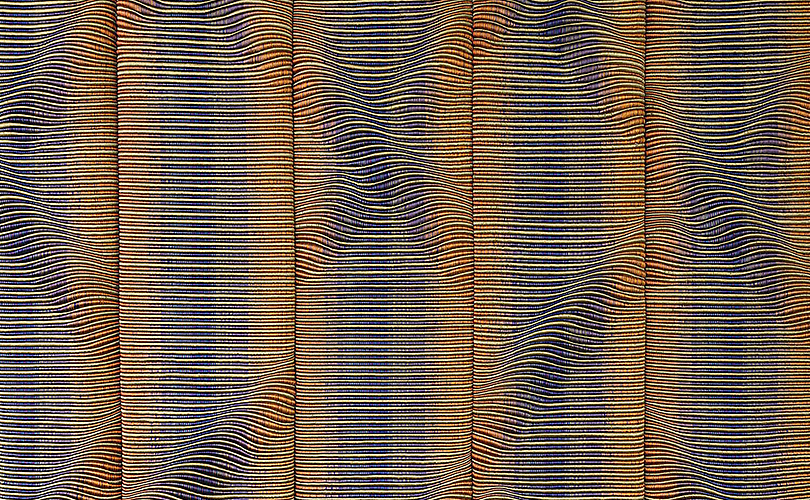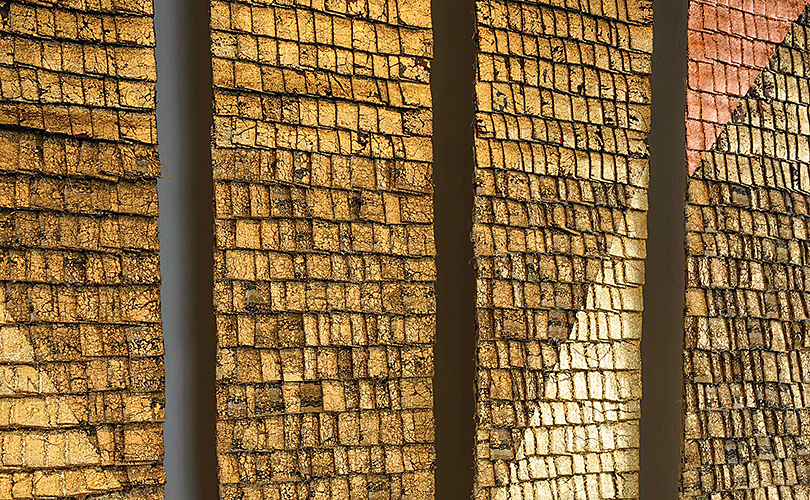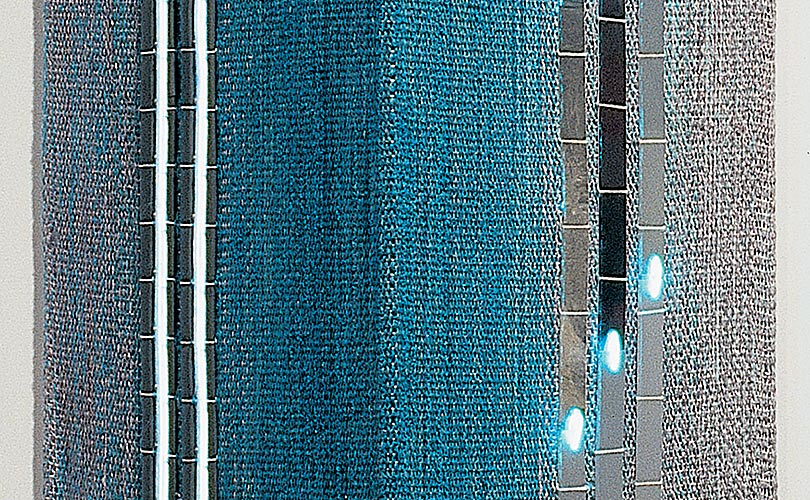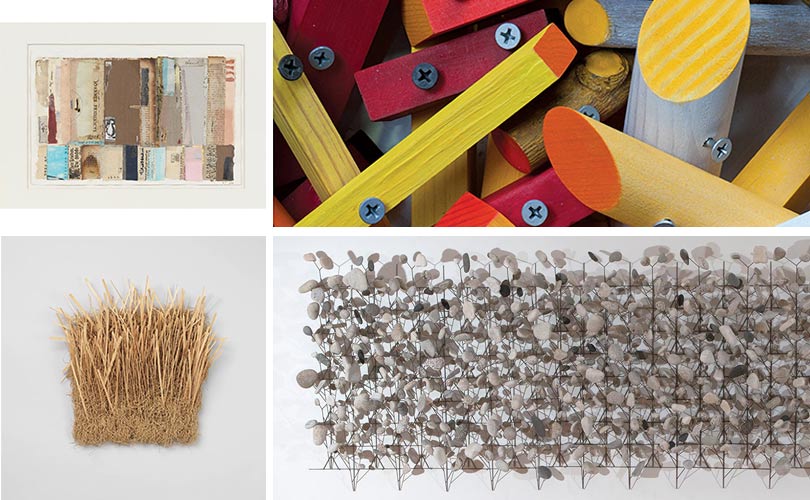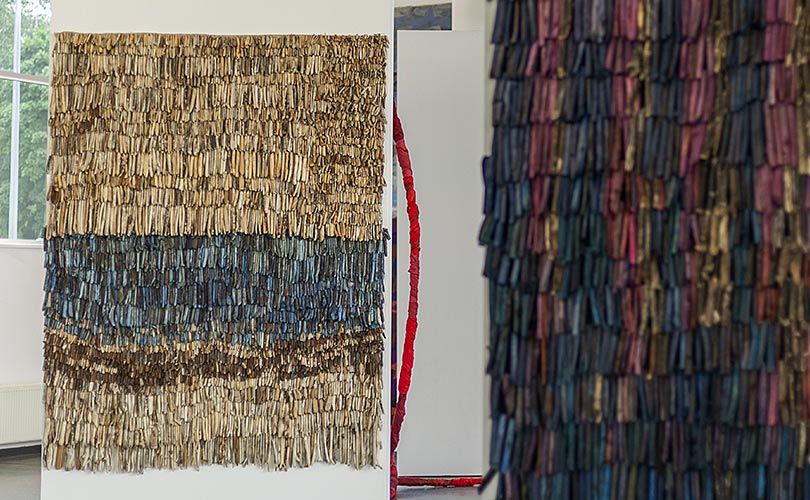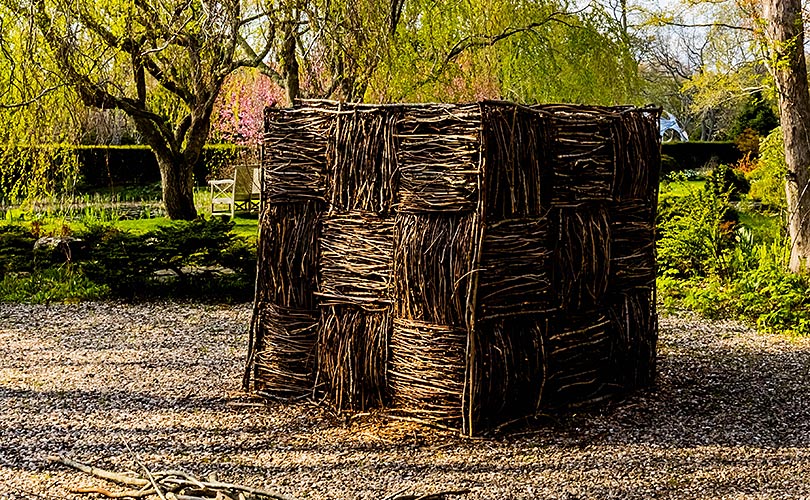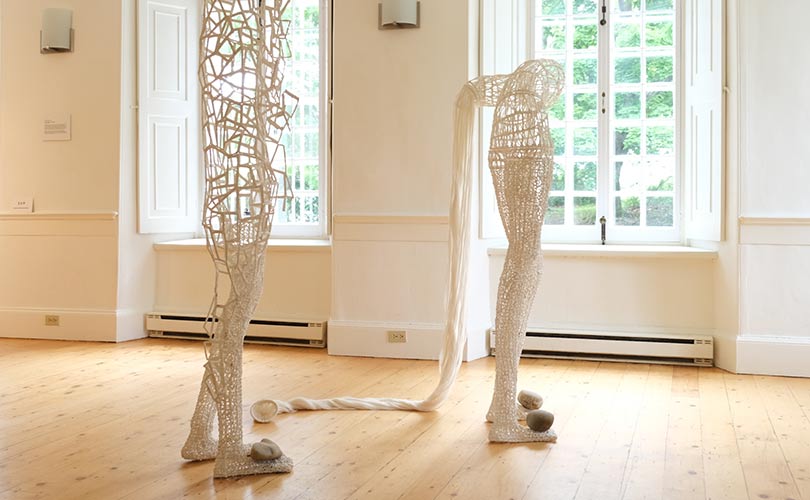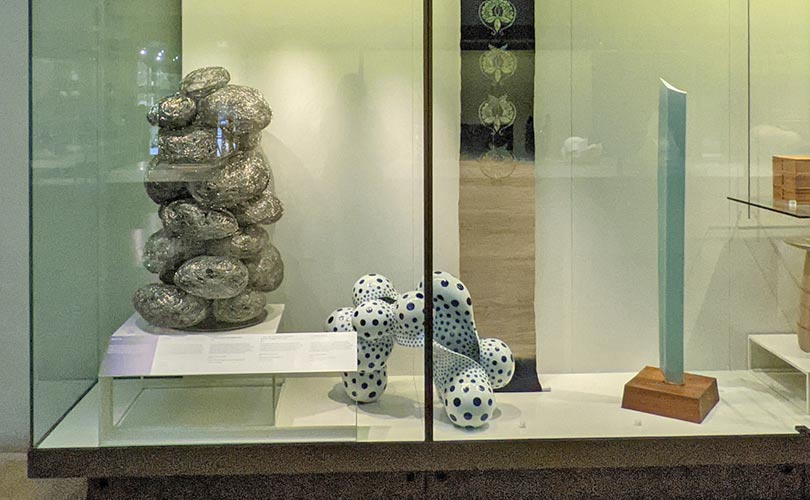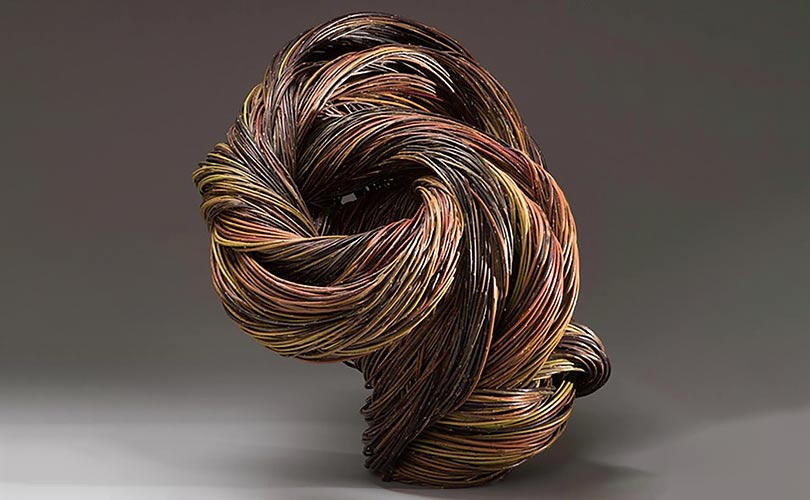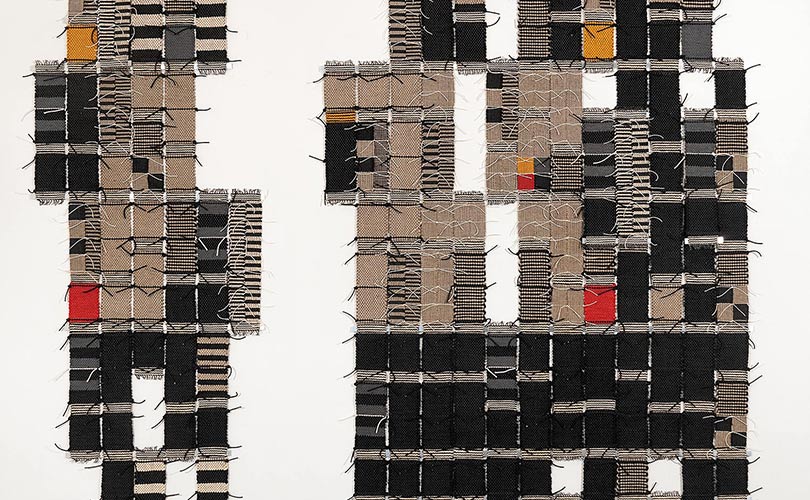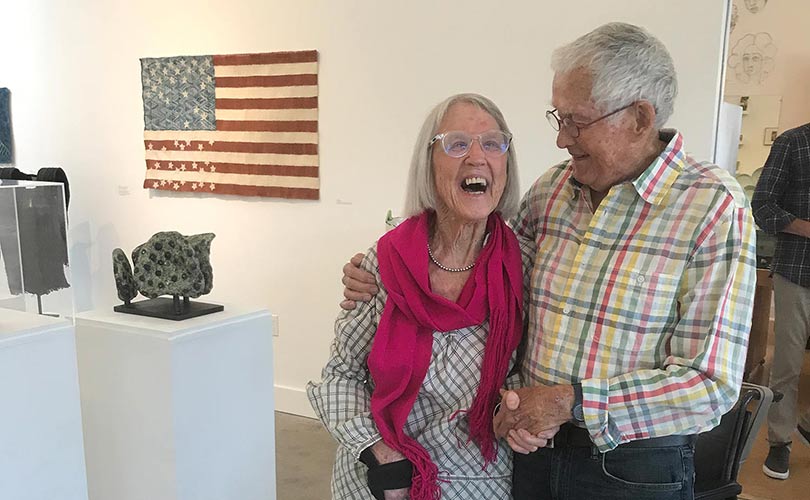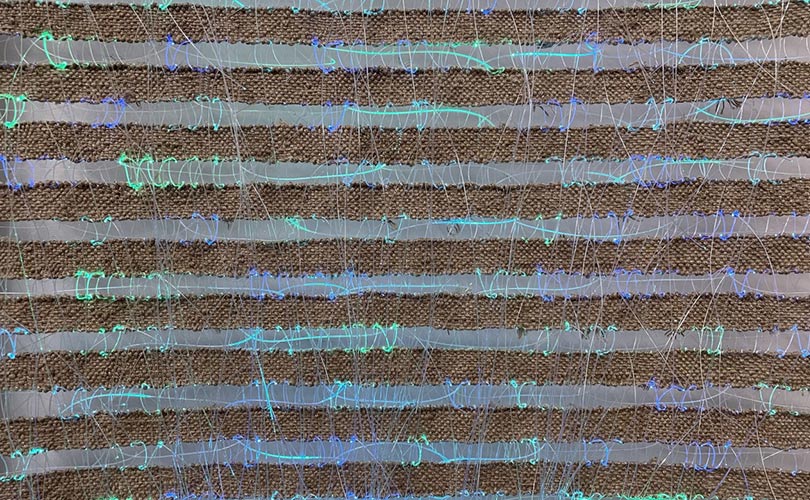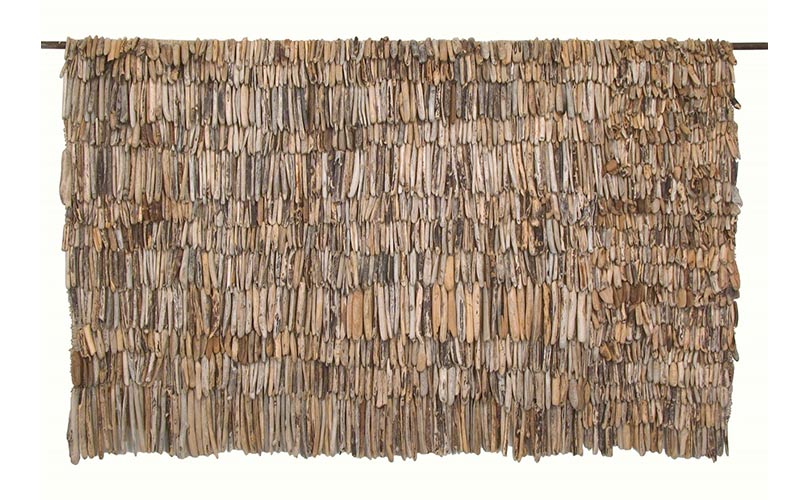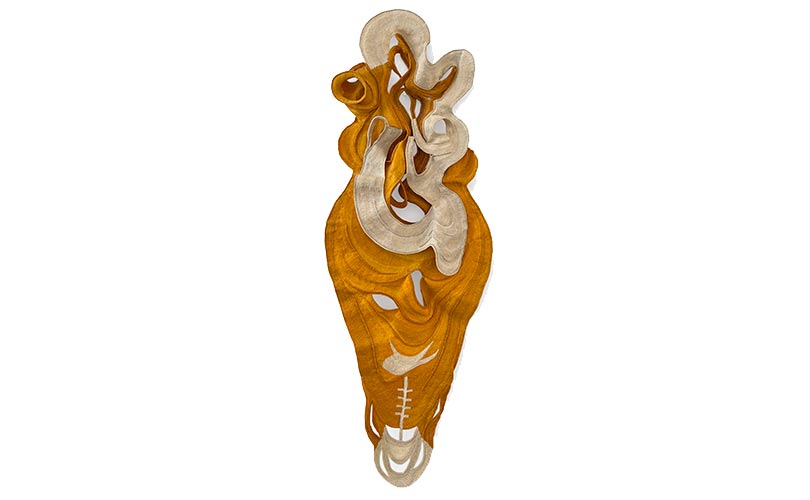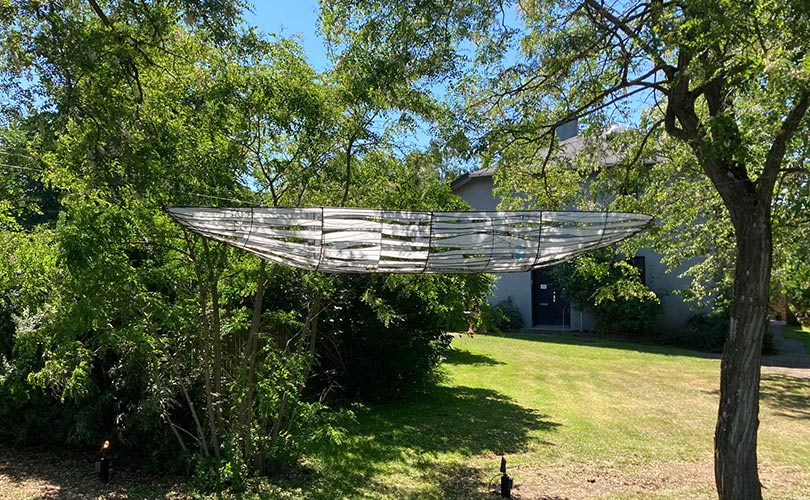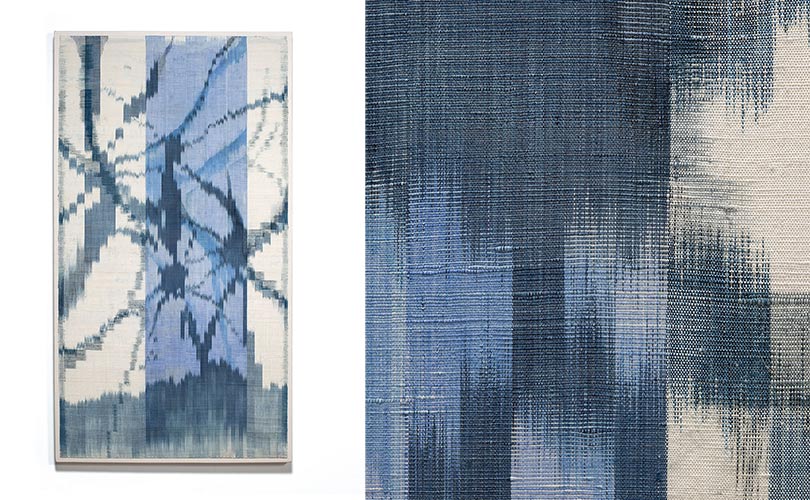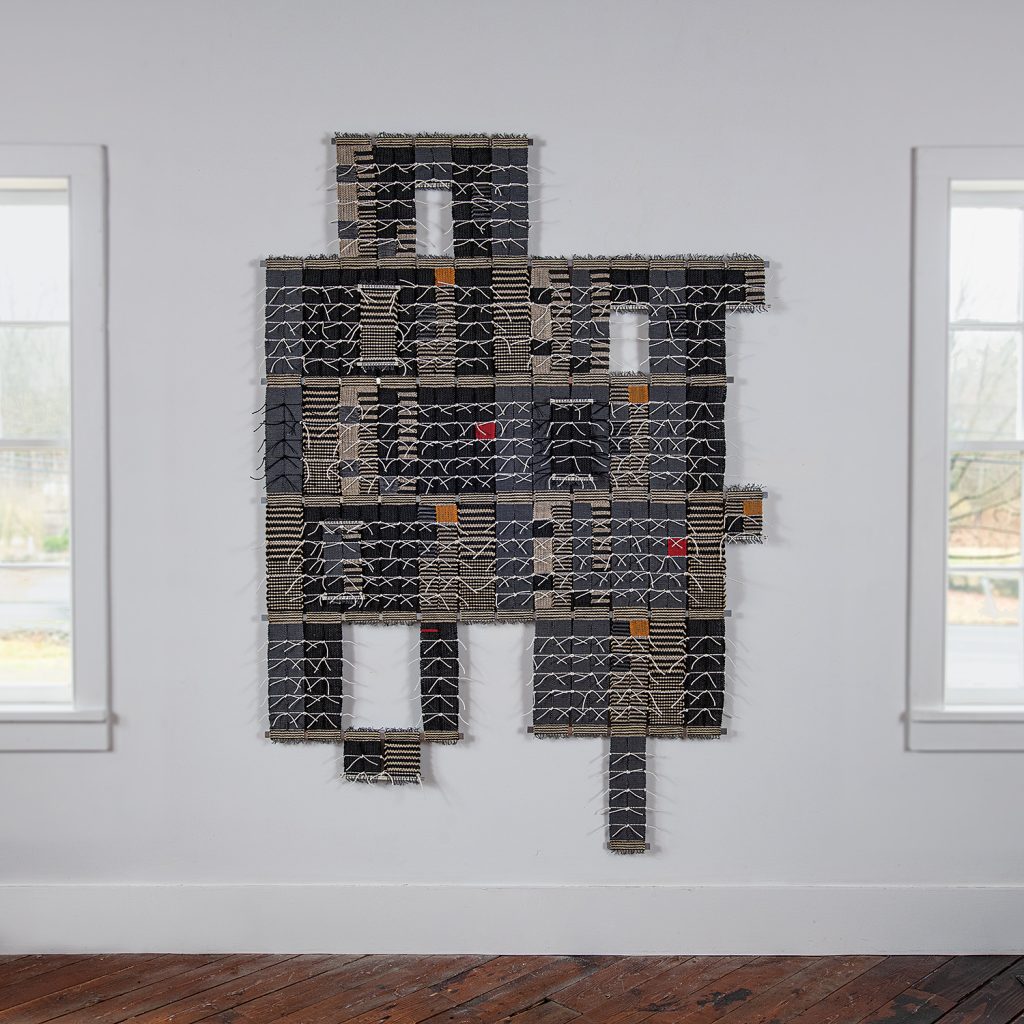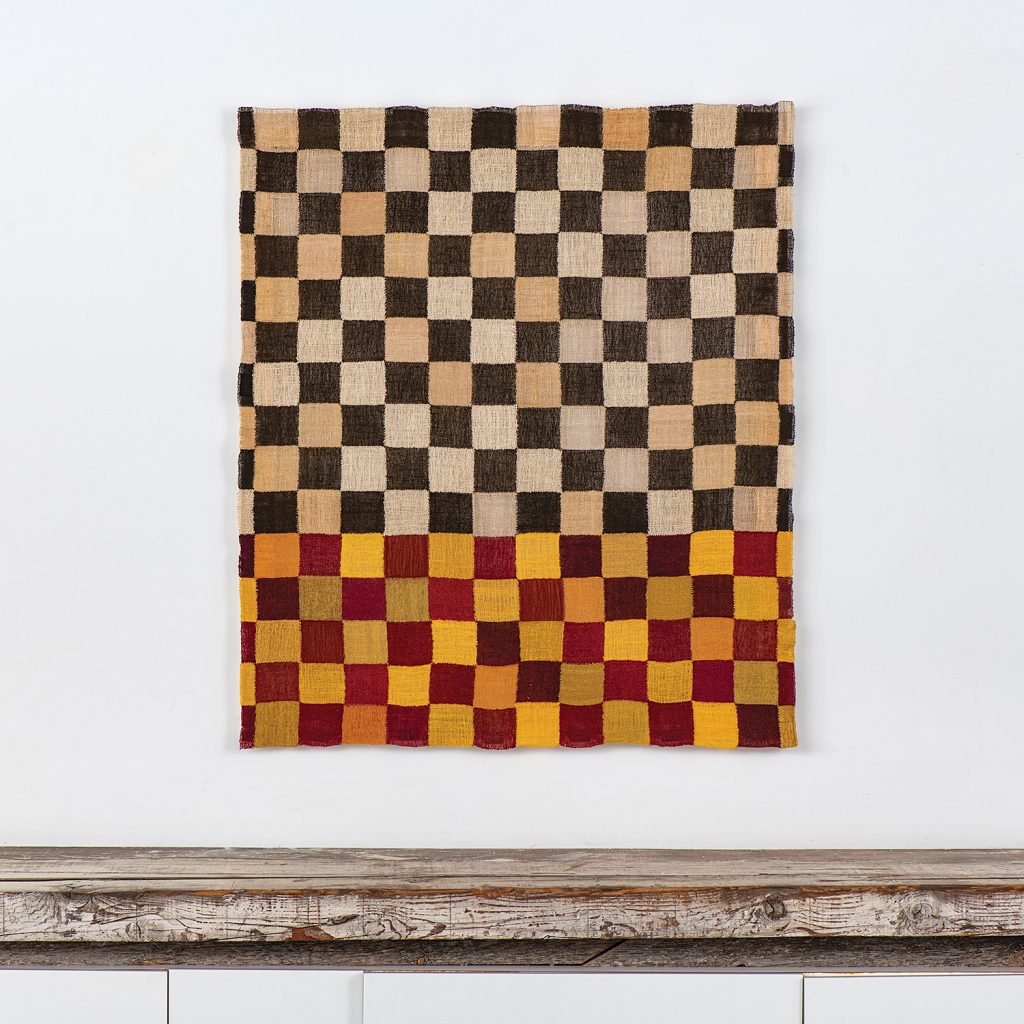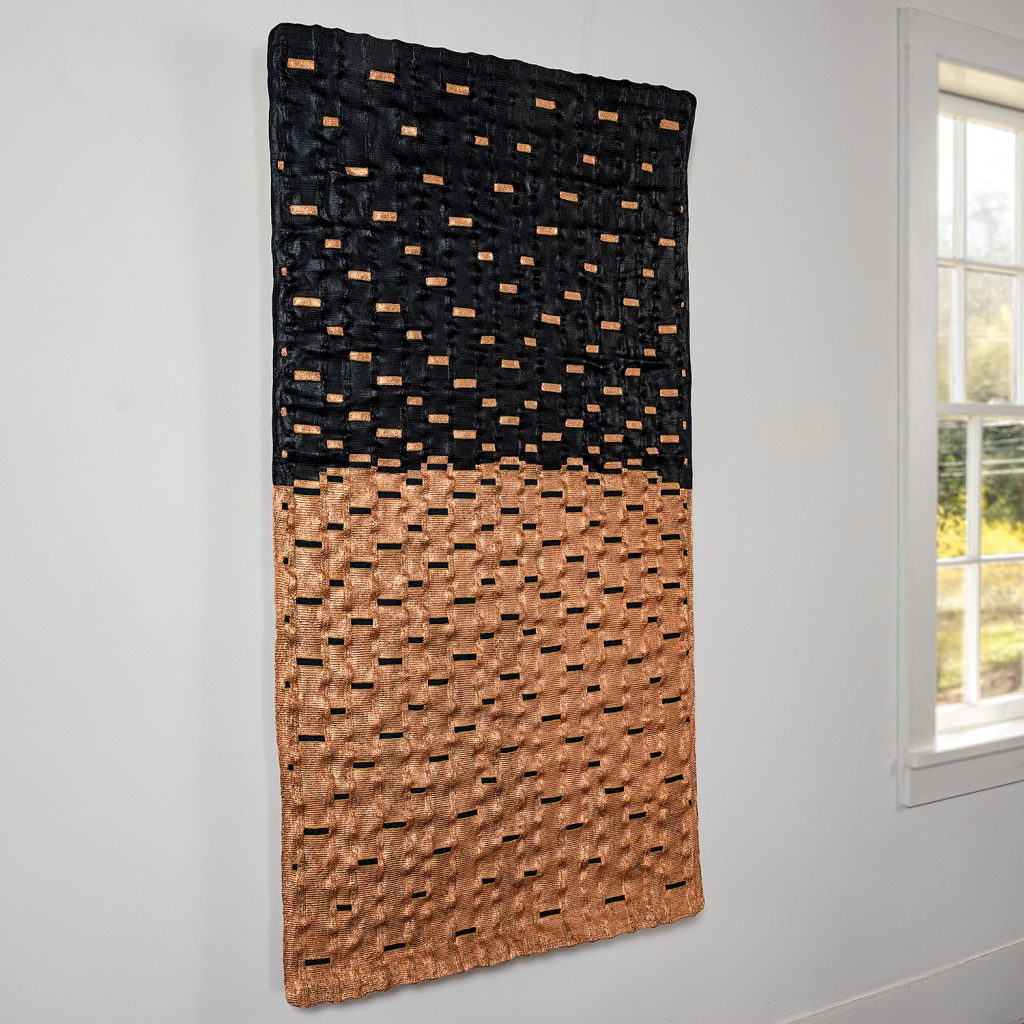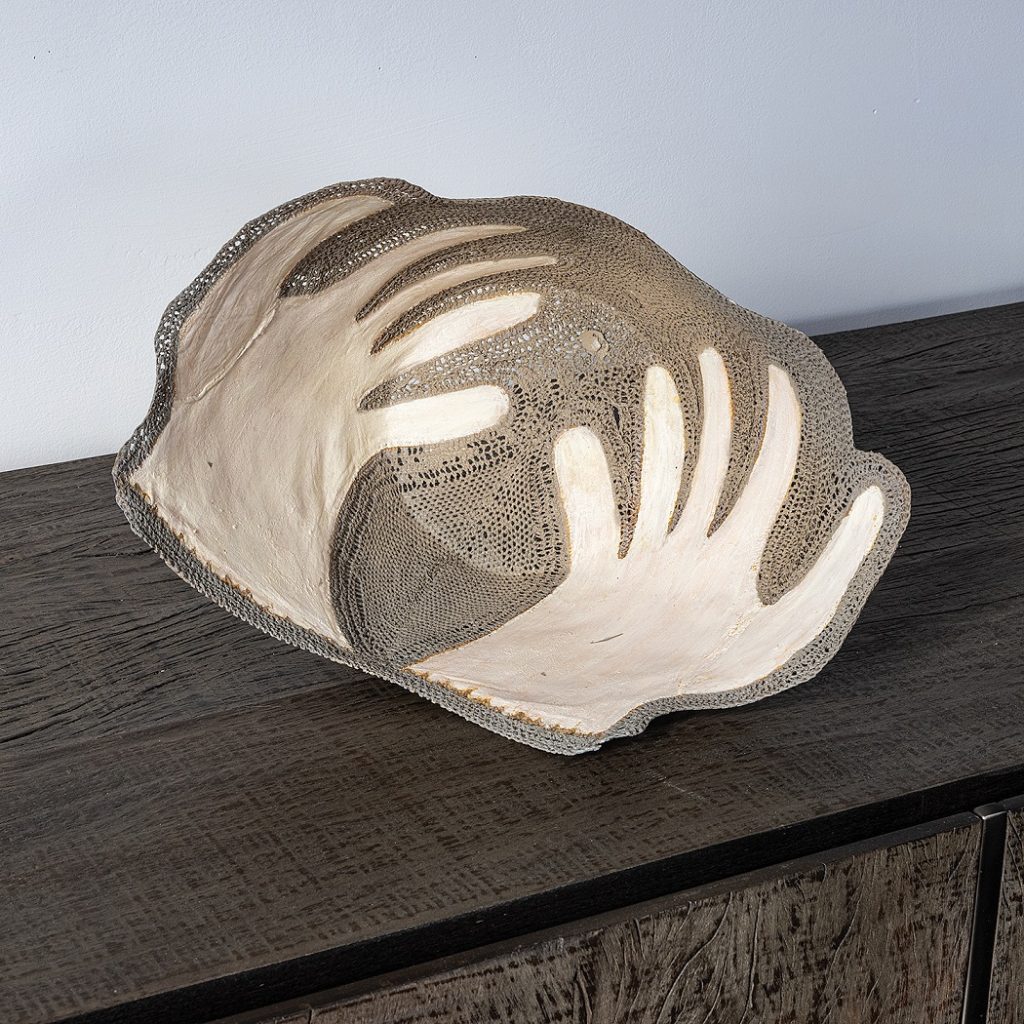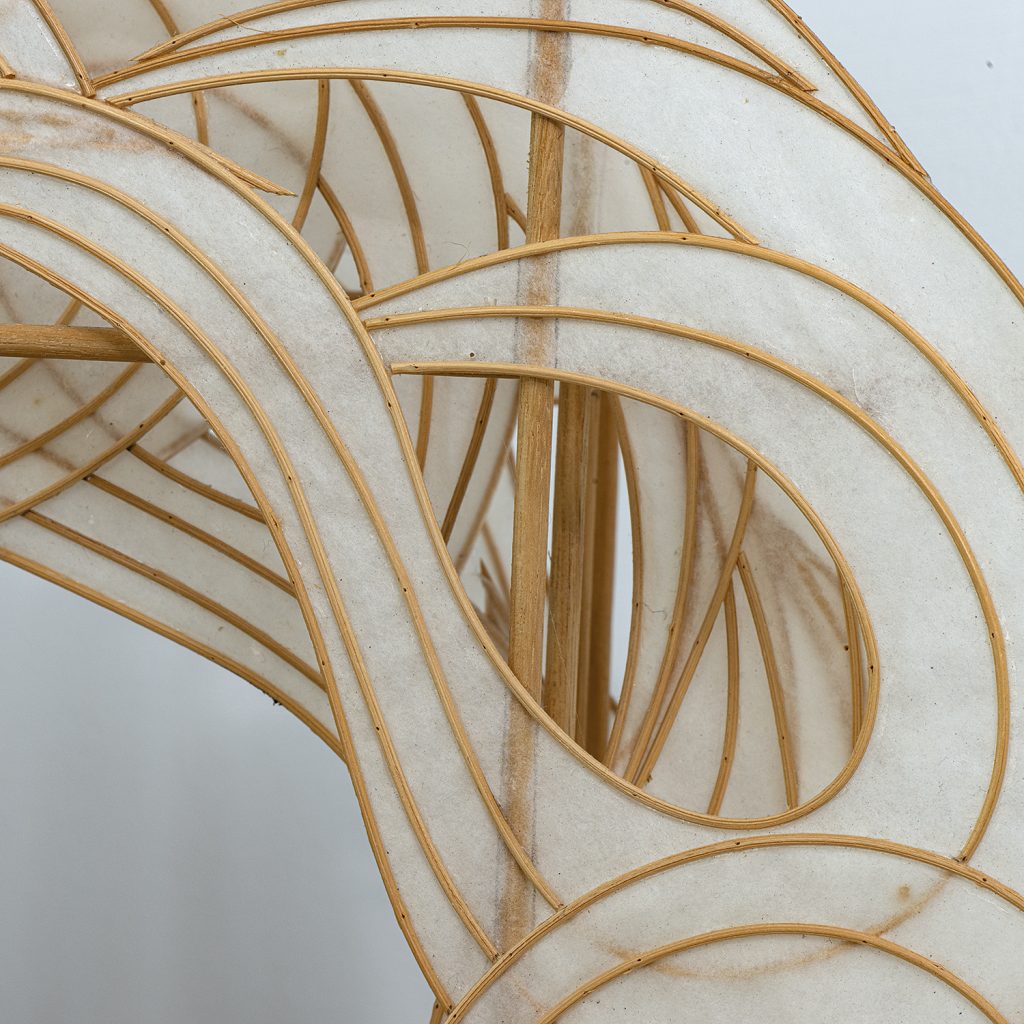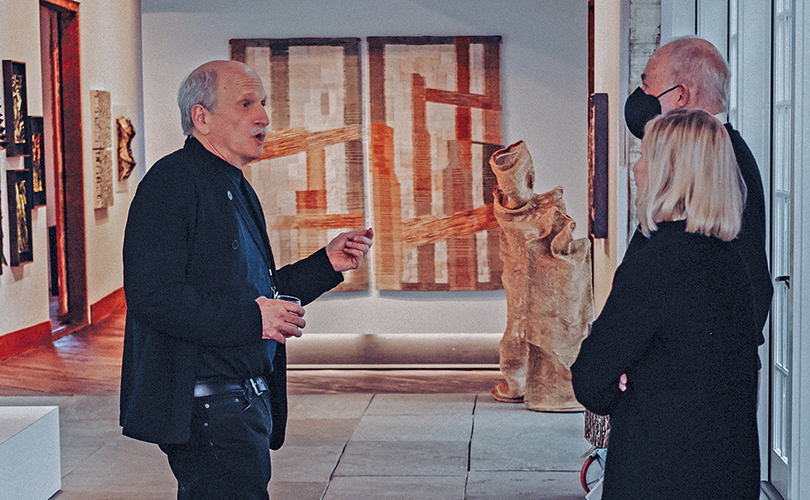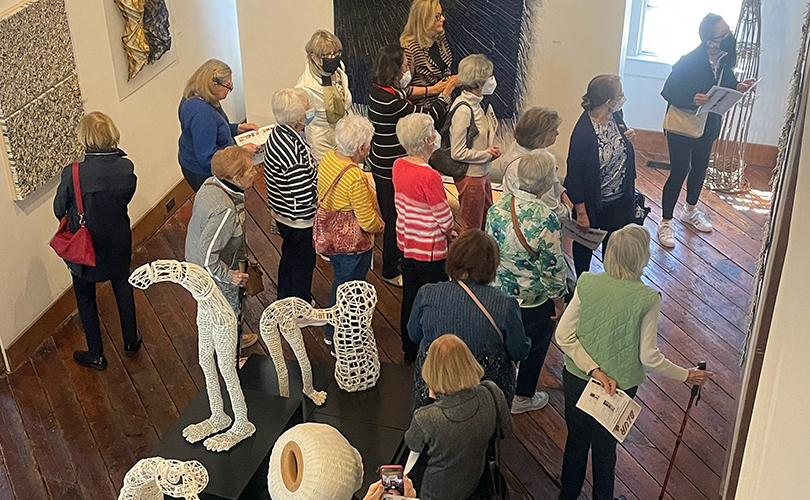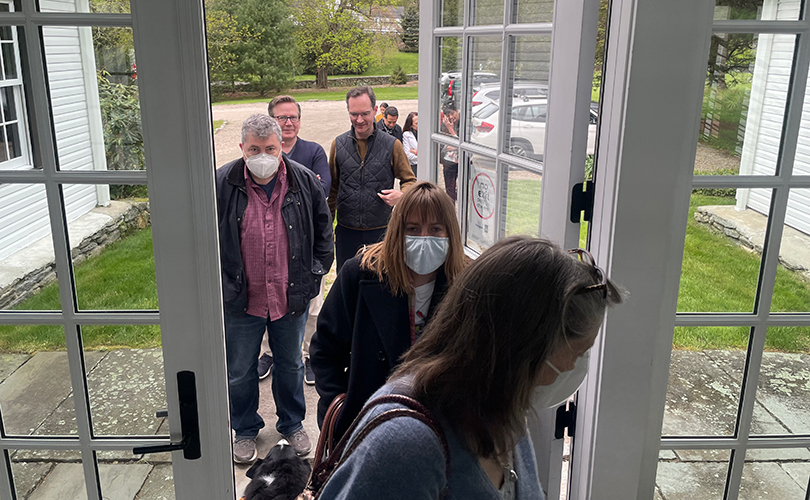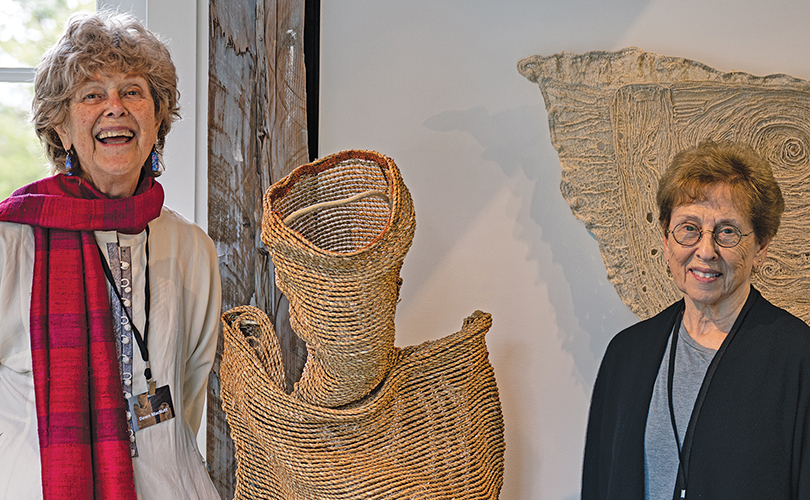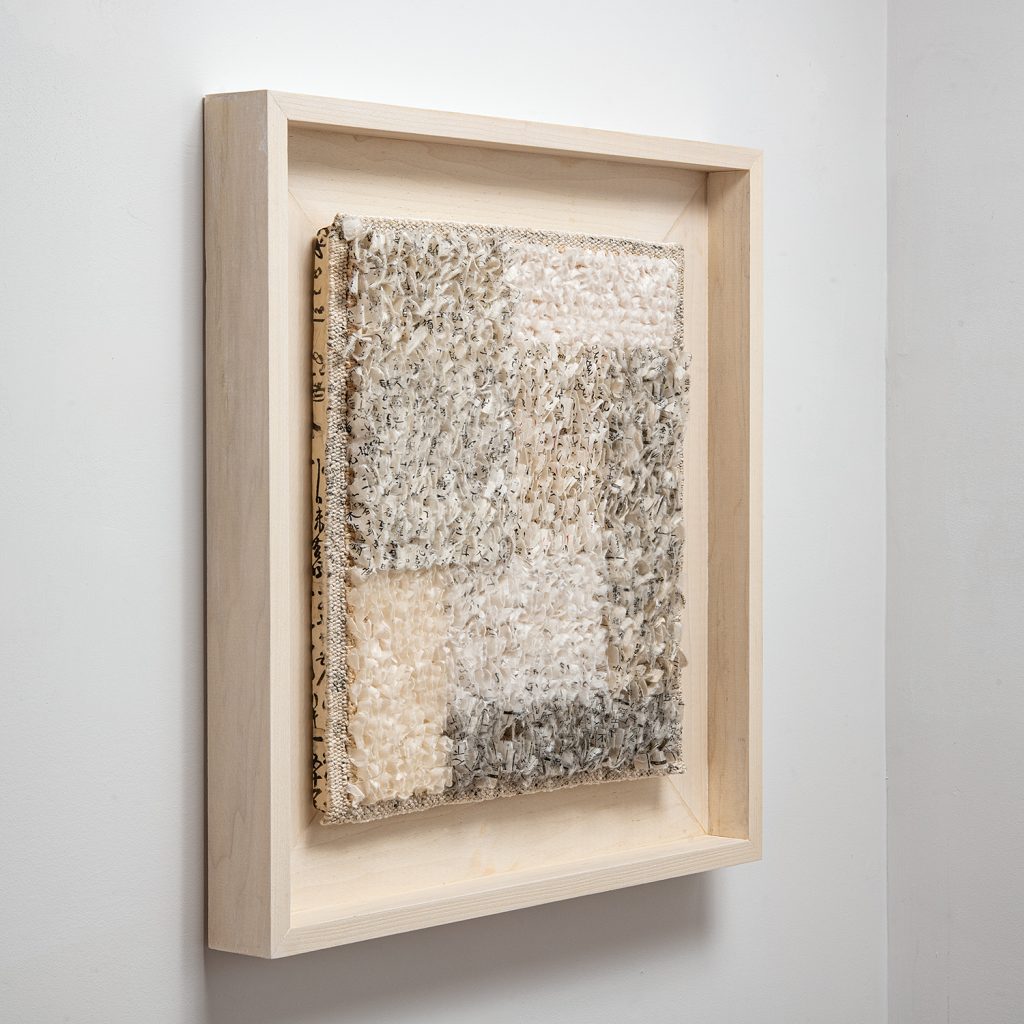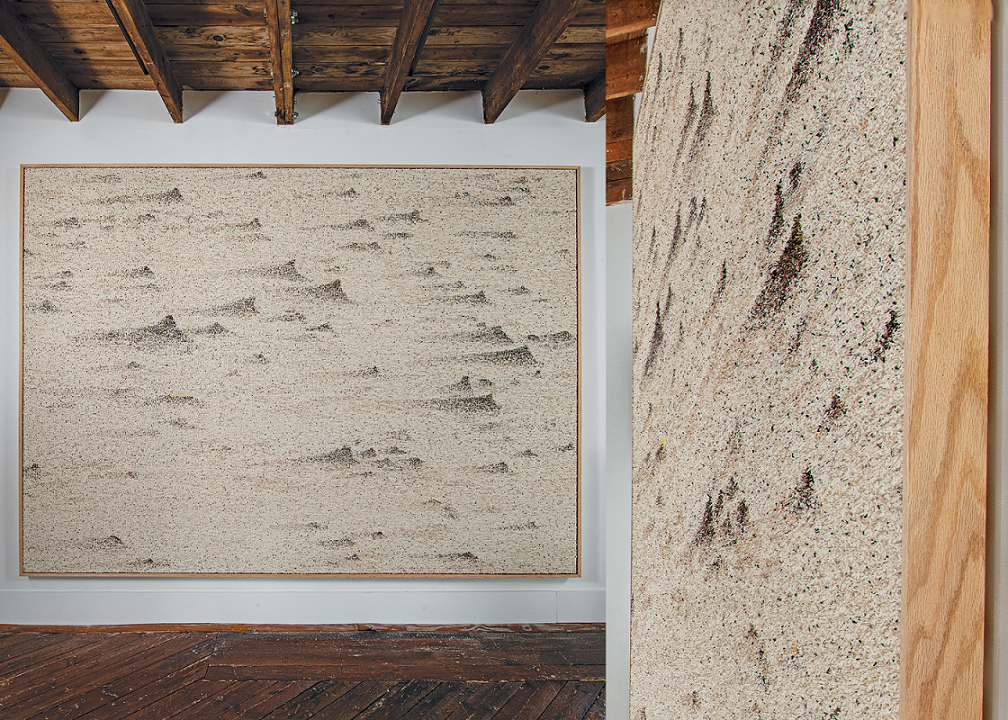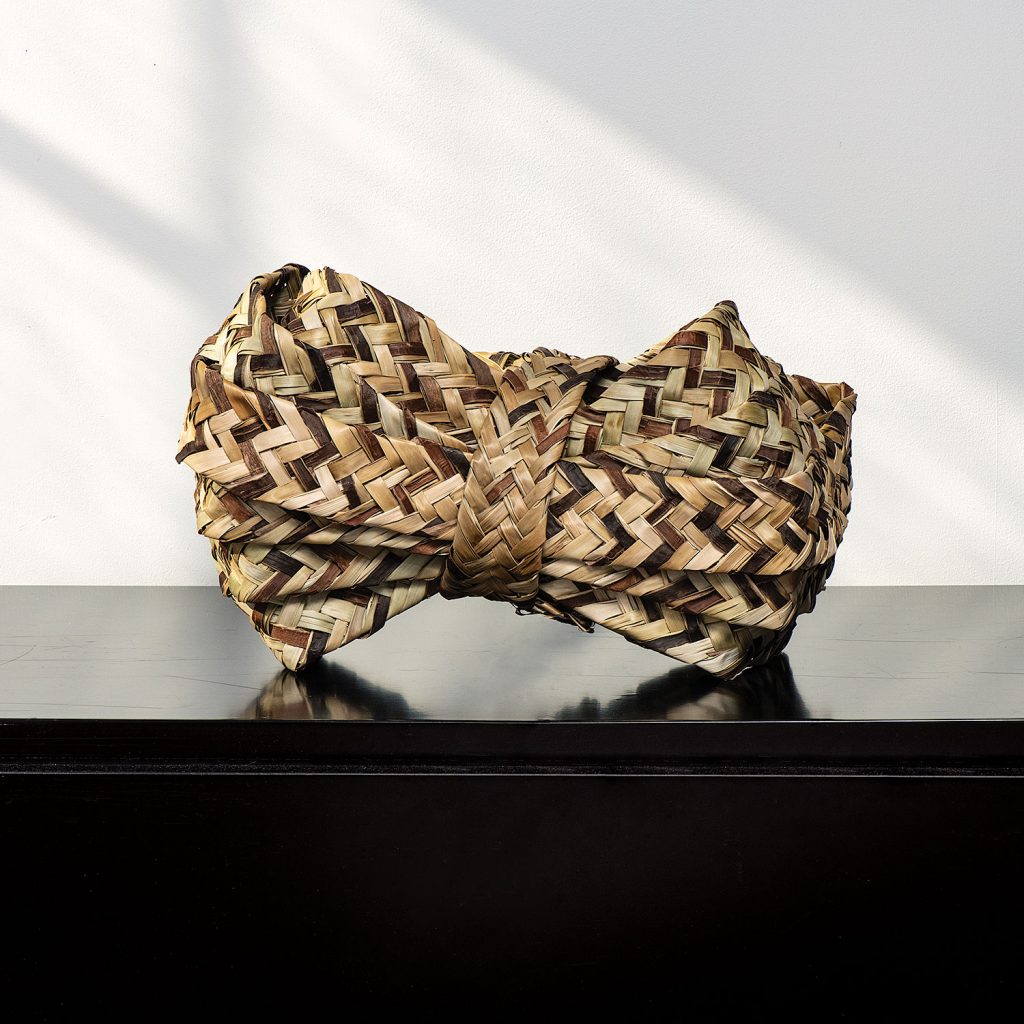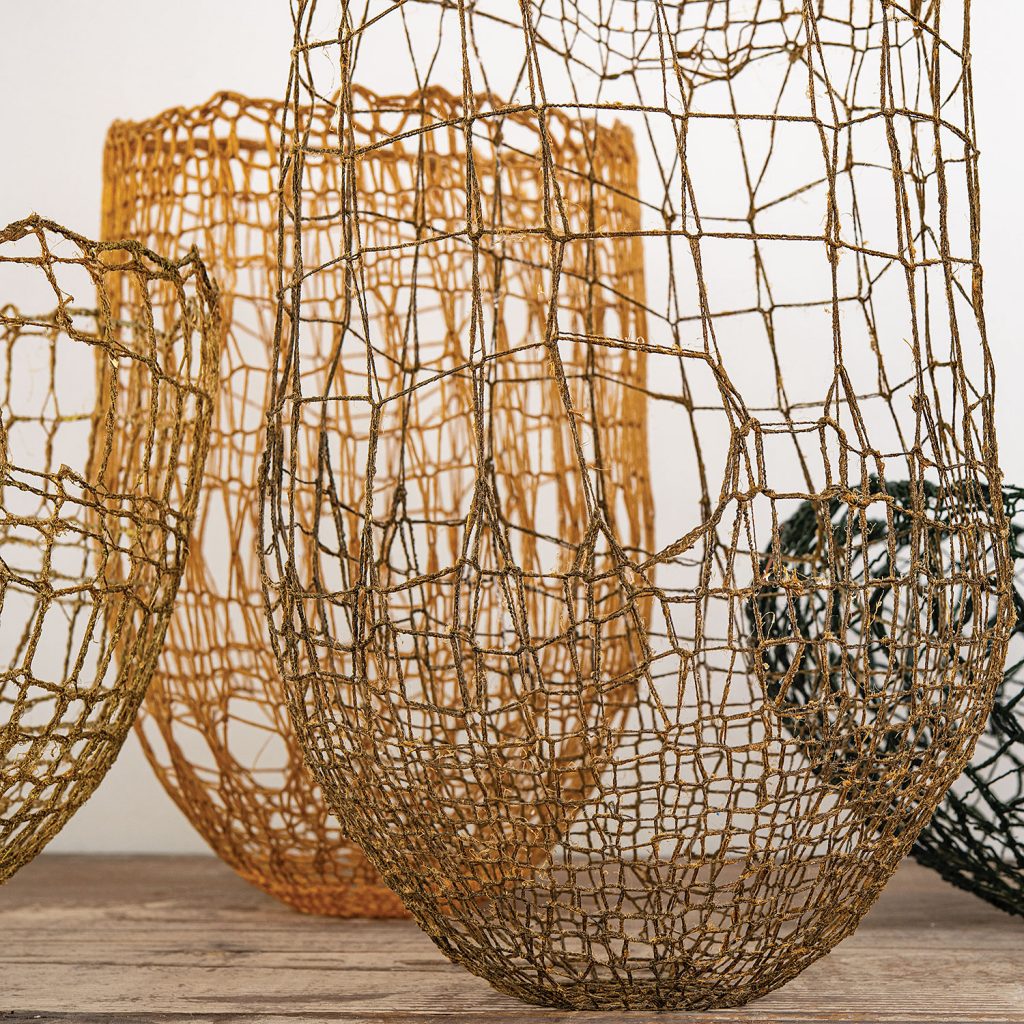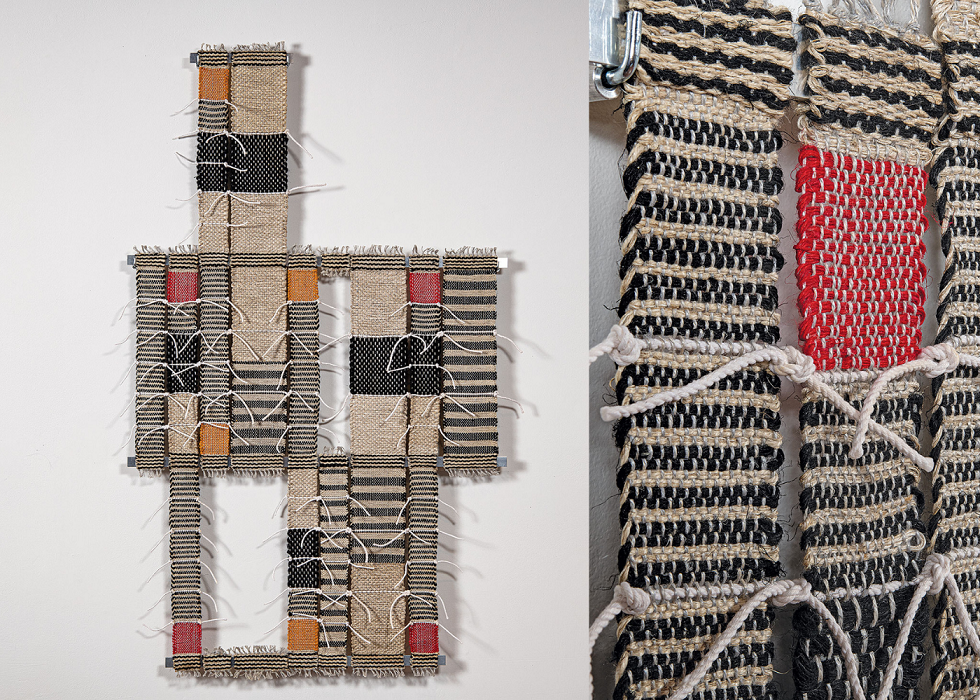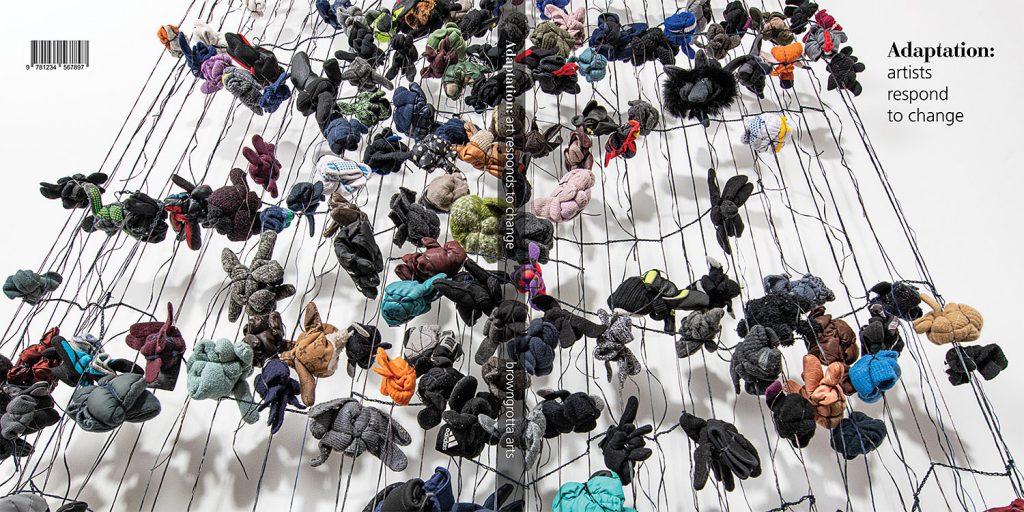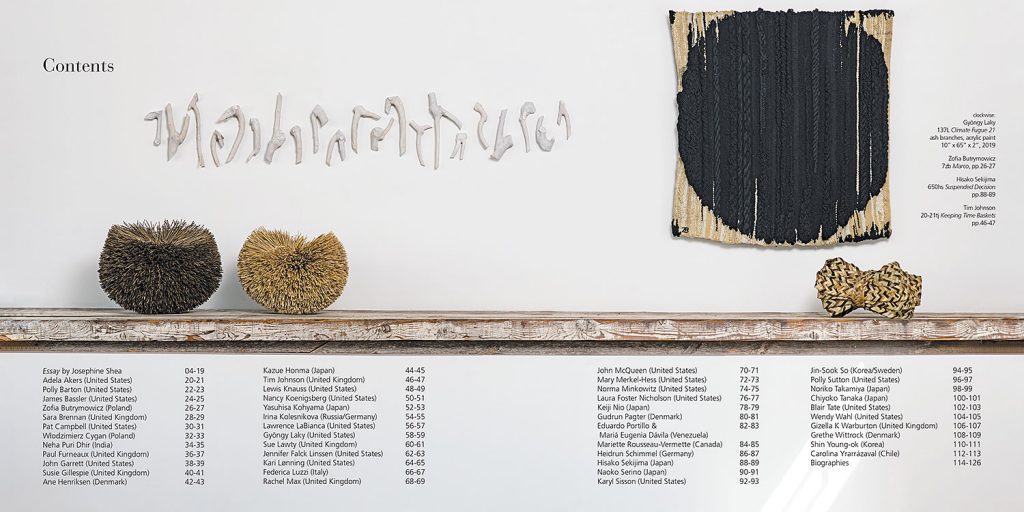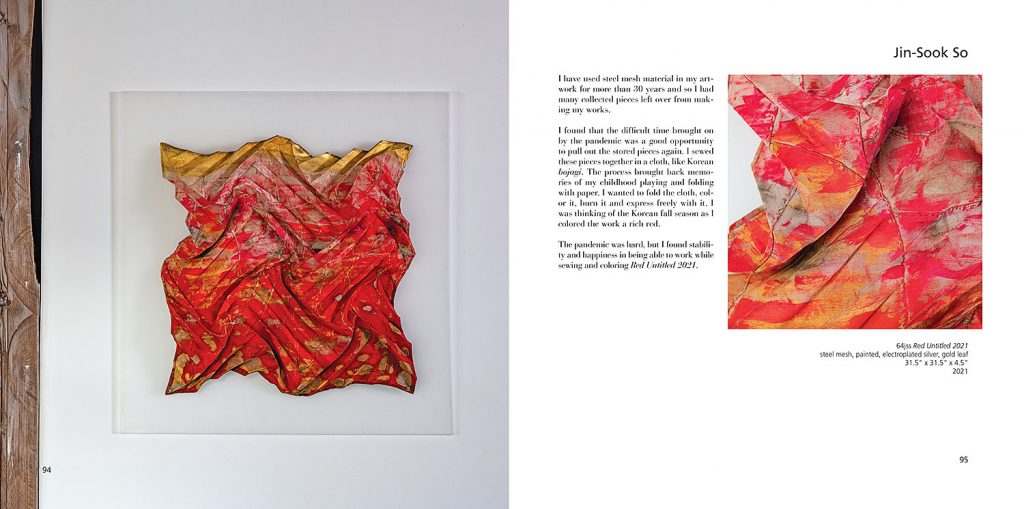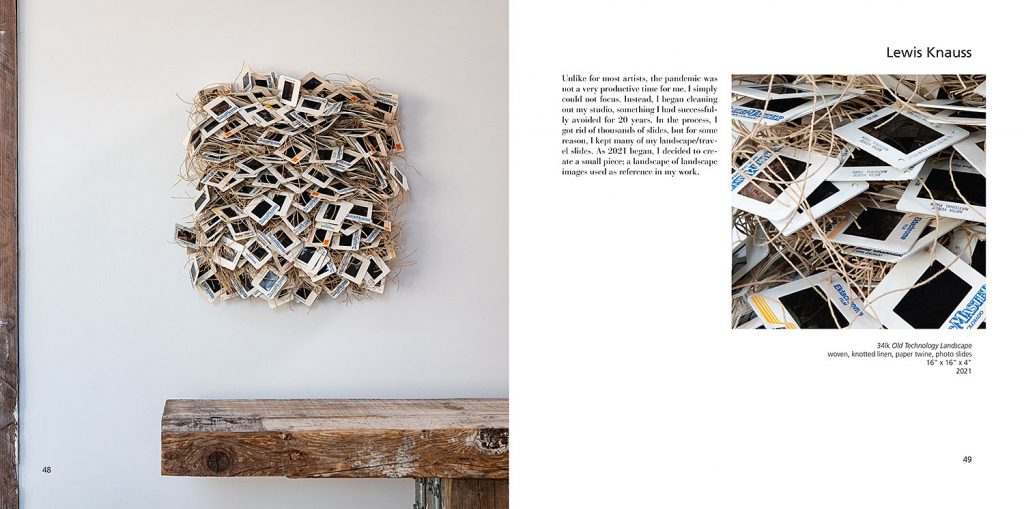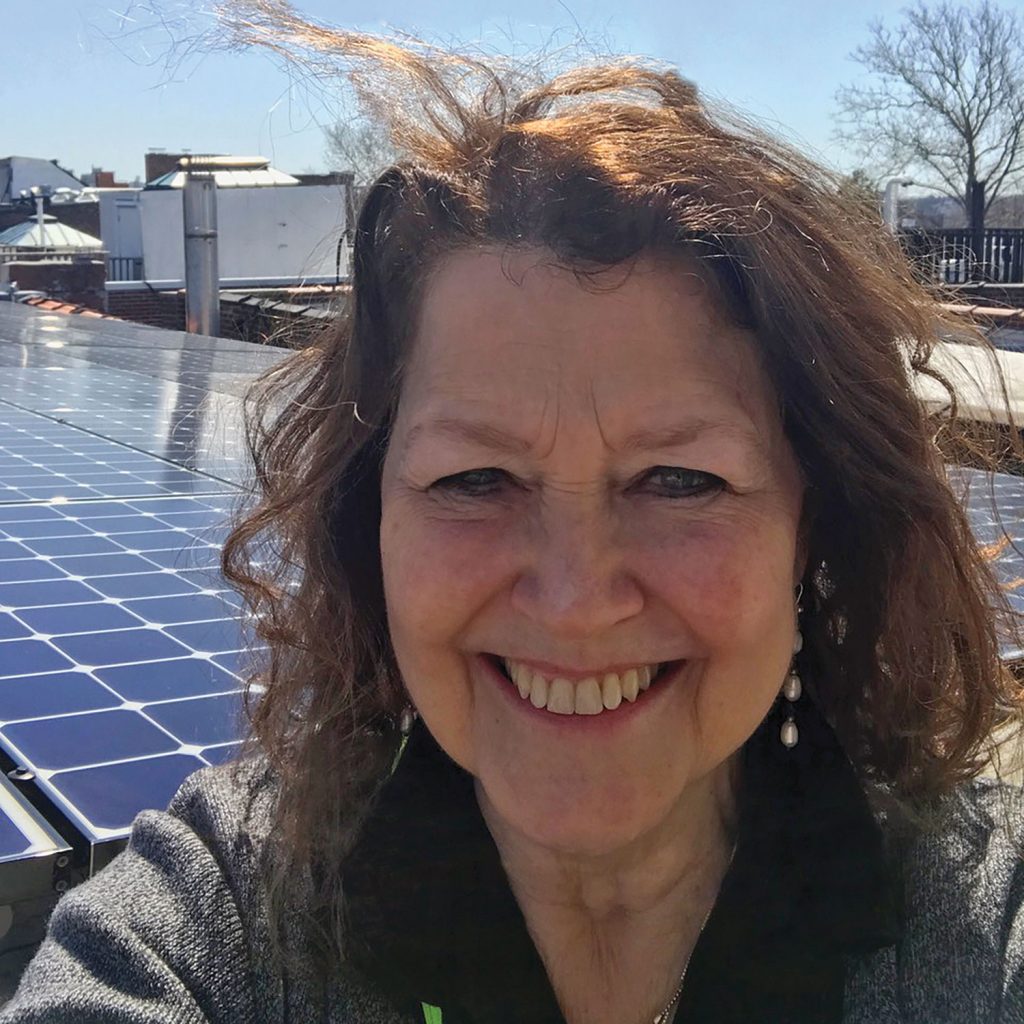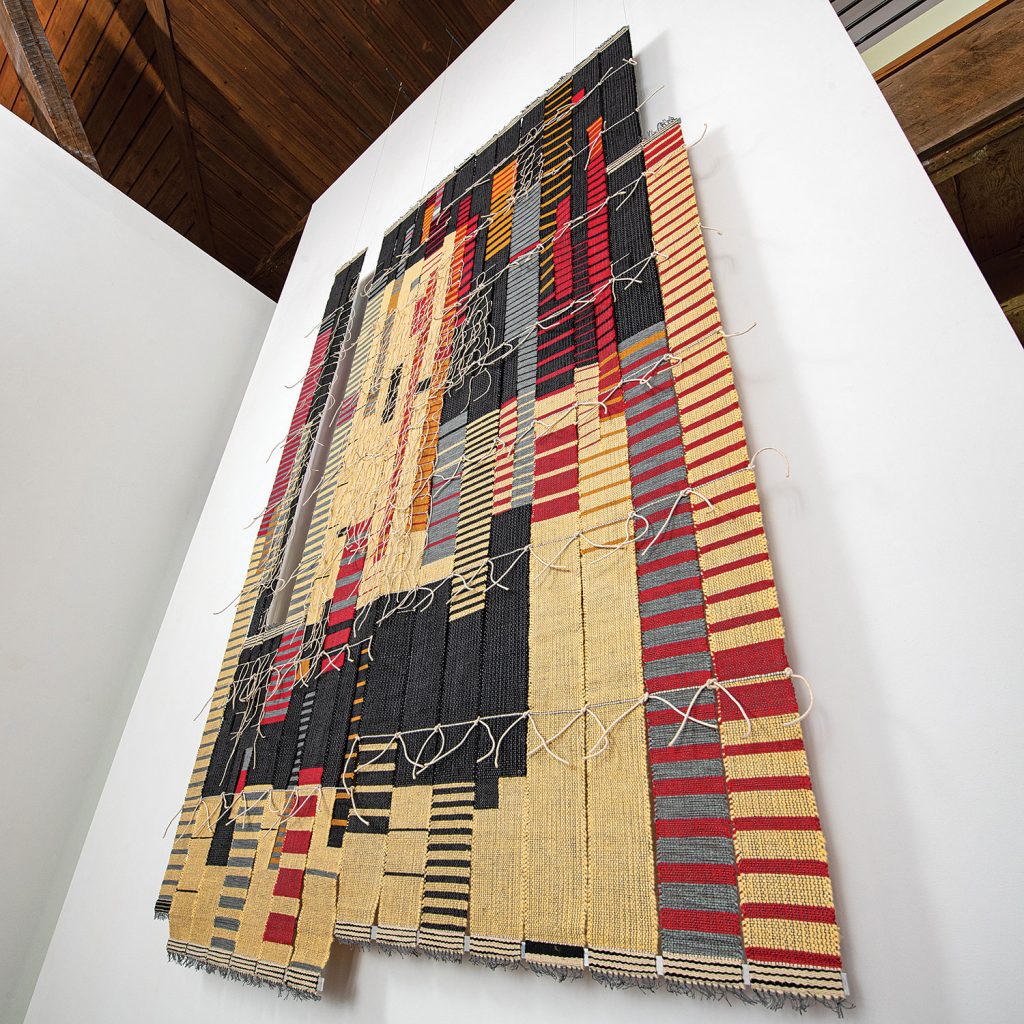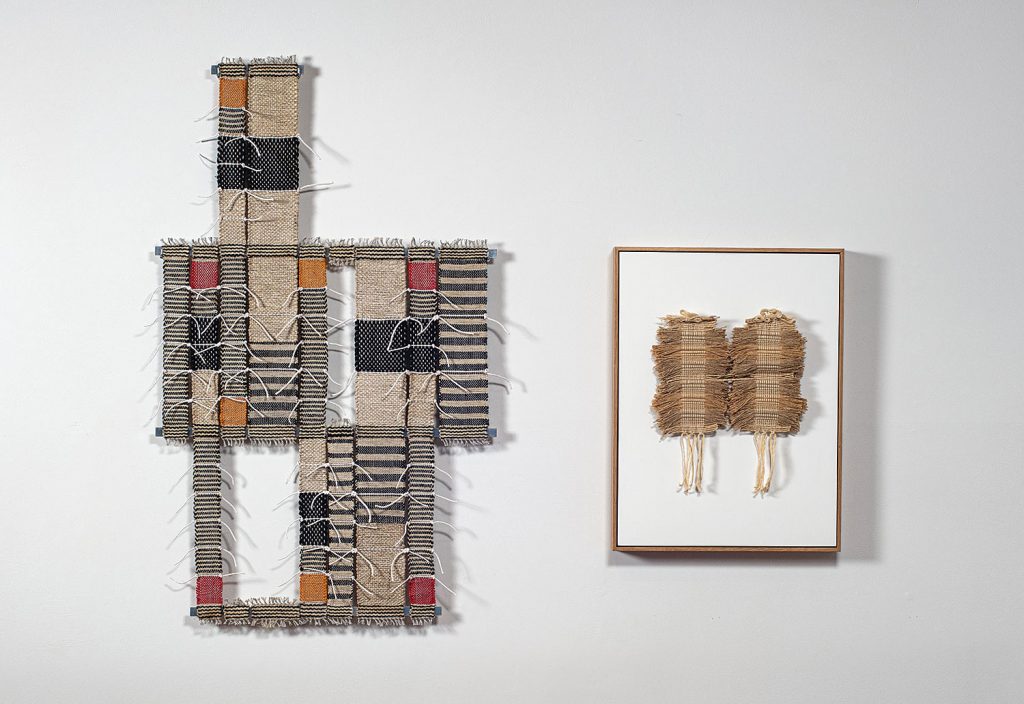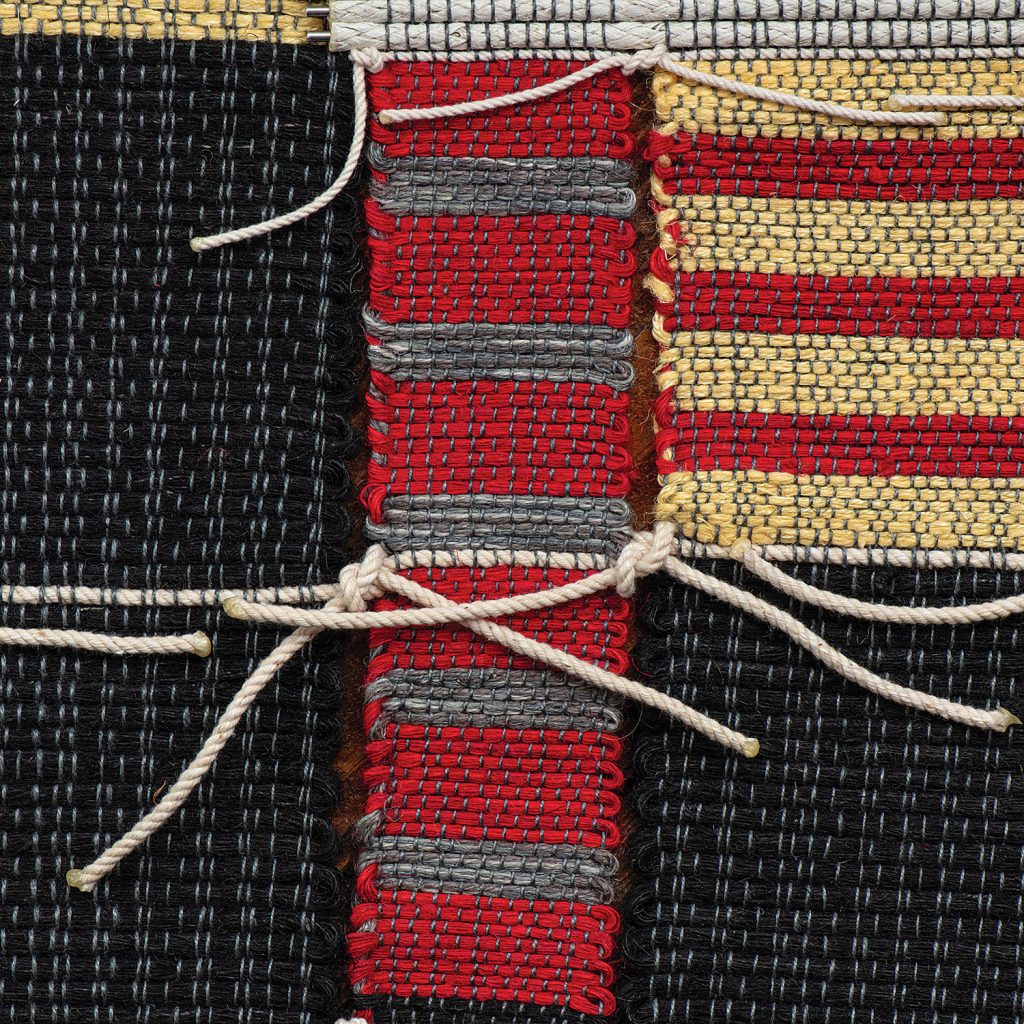
Join us this week, through Sunday May 12, at 6 pm to see our Spring Art in the Barn exhibition, Discourse: art across generations and continents. Traffic has been steady, including a guided tour for 15 people on Tuesday, but we still have slots available for gallery appointments and drop ins.
Viewers will enjoy 150+ works by more than 60 artists from 20 countries. Many people take two trips through the space to ensure they have not missed anything.
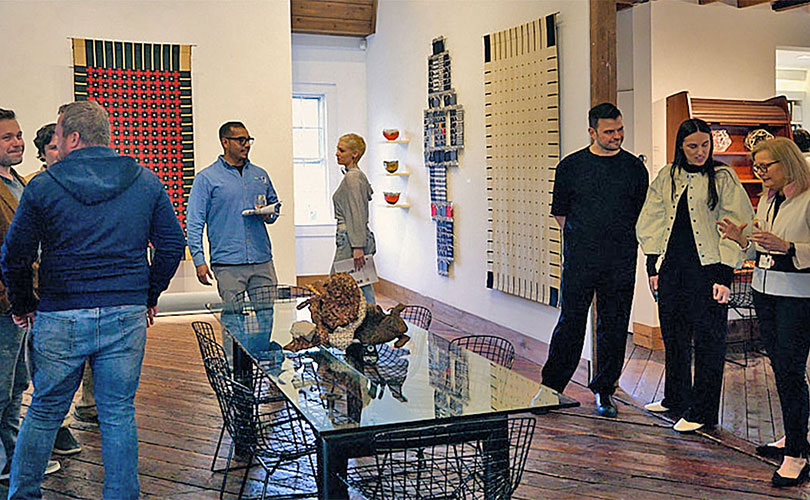
While here they learn more about works in the show including Irina Kolesnikova’s Spectator, a filmstrip- like group of woven portraits of her alter ego. She places him in discomfiting situations. “Sometimes the events happening around him are frightening,” Kolesnikova says, “he wants to go away, to run far away. But curiosity makes him come back again, secretly observing, trying to memorize all impressions.”
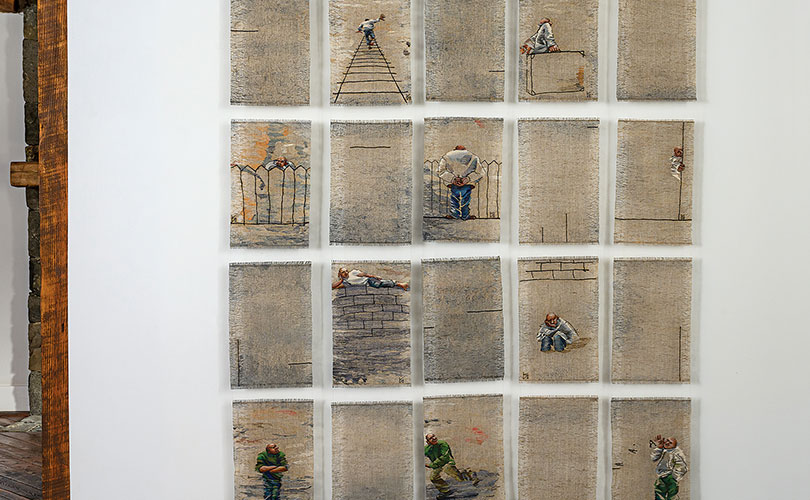
James Bassler’s This Old House, is another work that encourages viewers to take a closer work and consider its inspiration and origins. “Over a year ago, a friend gave me a book, Caste, by Isabel Wilkerson,” Bassler writes. “It caused me to begin yet another weaving of a flag, which includes references to the textile traditions of Africa. In my early days of learning how to weave, the late 60s and early 70s, I wove many samples, and after weaving, experimented with batik and dyeing. After all these years, those woven samples — maybe eight or ten of them — were sewn together to become the surface on which the flag would eventually, after about a year, emerge.”
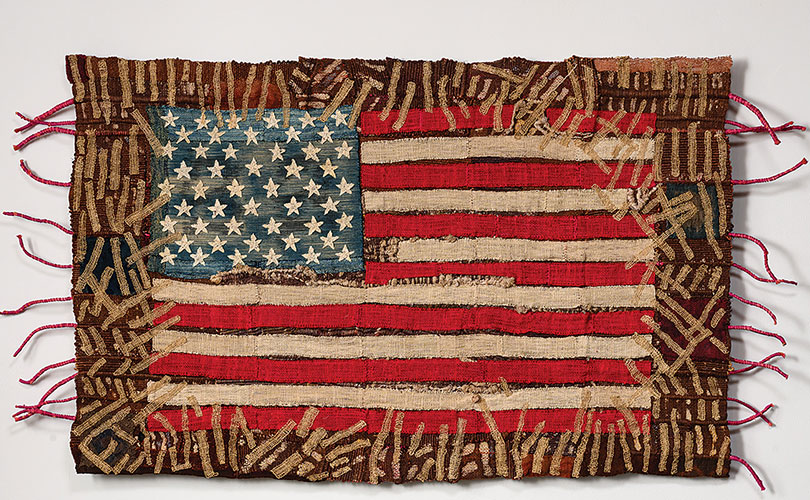
27” x 42”, 2024. Photo by Tom Grotta
Same Difference by John McQueen draws appreciative comments (“That’s clever!” “I get it.”) when people learn its backstory. It’s comprised of three items on pedestals made of sticks tied with waxed linen — a wooden sump pump, the skeleton of a bonsai tree, and a representation of the elephant god Ganesh made of tied twigs. The items seem to have been chosen randomly, but they are not. Each draws water from the ground and uses it to slake thirsty crops and people, trees and animals.
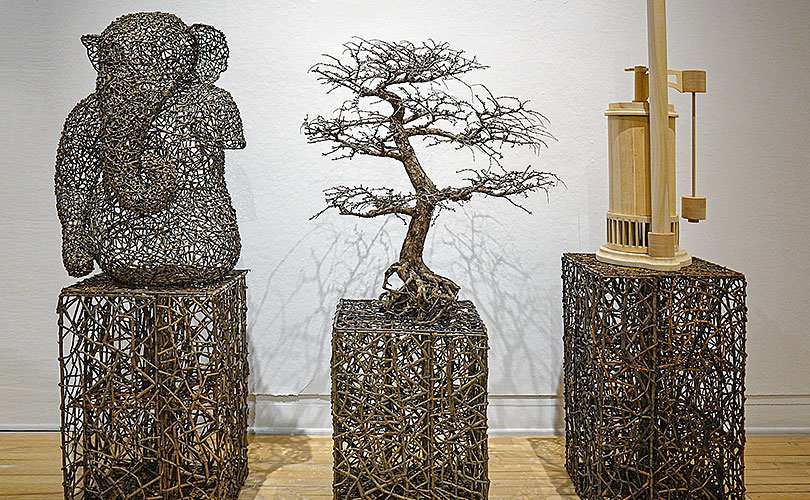
Wendy Wahl’s work in Discourse explores inversion — a reversal of position, order, form, or relationship — and requires people to take a closer look. Wahl writes that she reassembles encyclopedia pages because of their symbolism, conceptual reference, and unique paper quality. “My interactions with these materials,” she writes, “are meditative. These pieces are created by deconstructing the books, rolling and pinching the individual parts, and, like a puzzle, fitting them to the panel. The interconnected spiral elements become the picture plane that explores dimension, direction, texture, color, and reflection.”
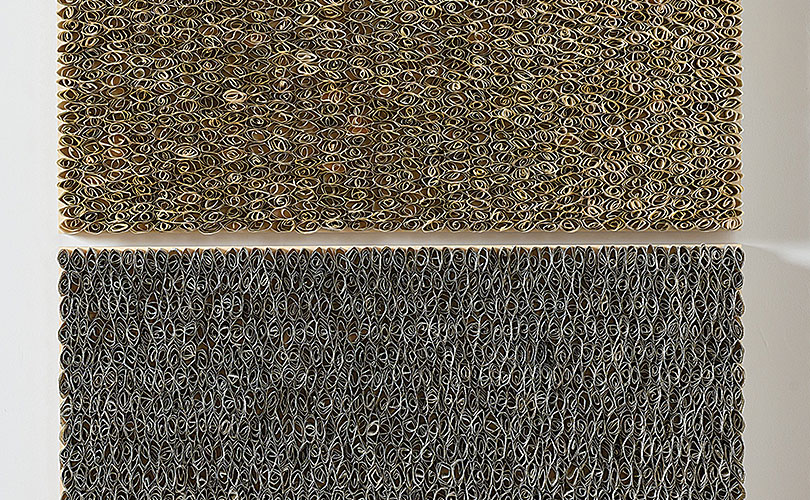
The evocative forms of Rachel Max’s work draw viewers in for inspection and introspection. Over the last few years, Max has been making forms that explore notions of infinity and time. The title for her piece in this exhibition, Caesura, came to her while she was making it. “I was thinking about the composition, working out where the weave should become less dense and where one section would end and another begin. I wanted to create a visual interruption, my equivalent to a break in music or a pause. In poetry, I discovered, this is called Caesura.”
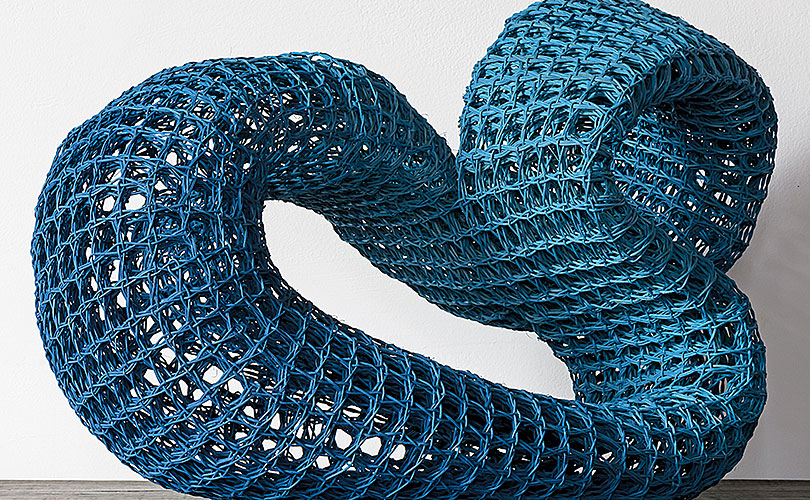
There are dozens of works to discover at Discourse: art across generations and continents and five days remaining to join us. Hope we’ll see you!
Schedule a visit
Times to visit Discourse: art across generations and continents can be scheduled on POSH.
Exhibition Details:
Discourse: art across generations and continents
Through May 12, 2024
browngrotta arts
276 Ridgefield Road, Wilton, CT 06897
Gallery Dates/Hours:
Wednesday May 8th through Saturday, May 11th: 10am to 5pm (40 visitors/ hour)
Sunday, May 12th: 11am to 6pm [Final Day] (40 visitors/ hour)
Schedule your visit at POSH.
Safety protocols:
POSH reservations strongly encouraged • No narrow heels please
Catalog:
A full-color catalog, browngrotta arts’ 59th, Discourse: art across generations and continents, with an essay by Erika Diamond, Artist | Curator | Associate Director of CVA Galleries | Chautauqua Institution, will be published by the browngrotta arts in May 2024 in conjunction with the exhibition.
Upcoming:
browngrotta arts will present a talkthrough of slides from Discourse on Zoom, Art on the Rocks: art art talkthrough with a twist, on Friday, June 11th at 7 pm EST.

